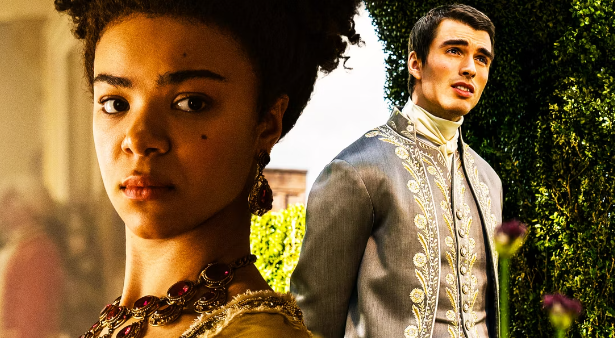
Spoiler alert! The following contains significant details from Netflix’s “Queen Charlotte: A Bridgerton Story.”
Romantic? Yes. Sexy? For sure. Historically accurate? No, not really.
Netflix’s “Bridgerton” spinoff “Queen Charlotte” (now streaming) has captured our hearts and binge-watching hours since its May 4 premiere on the streaming service. And while it’s a great romance and soap opera, it’s not a very good history lesson. The series’ narrator, Lady Whistledown (Julie Andrews), says as much herself in the opening moments, calling it “fiction inspired by fact.”
Amid all the fiction in “Charlotte” – which tells the origin story of a real British queen but takes extensive liberties – there are a few facts sprinkled in here and there. We separate the history from the fantasy in the six-episode Netflix series.

Was Queen Charlotte a Black woman?
The consensus is no. In the series, Charlotte (played by India Amarteifio in one timeline and Golda Rosheuvel in a later one and in “Bridgerton”), is described as “very brown” by her mother-in-law and of the “Moorish race” (Amarteifio identifies as mixed race).
In real life, there is no evidence that this Queen Charlotte, the wife of King George III (whom you remember from your seventh-grade textbook on the American revolution), was Black or descended from Black people. There is a historical myth about her that persists (read more here), that was part of what inspired the depiction of the character in both series.
Did King George III have a mental illness?
Yes. Historians and scientists have different theories about his diagnosis, but George III (played by Corey Mylchreest) had documented bouts of mental illness, and eventually his eldest son George took over ruling for his incapacitated father as Prince Regent. That is what gives the period setting of “Bridgerton” and part of “Charlotte” the name “Regency era.” Prince George later became King George IV when his father died.
One of George III’s lines repeated in the series is an actual quote from the King: “I am born for the happiness or misery of a great nation, and consequently must often act contrary to my passions.”

Was there ever a ‘Great Experiment’ in the English aristocracy?
No. “Charlotte” offers a historical “what if” in its story called “The Great Experiment,” in which rich Black families were made a part of the nobility by George’s mother, Princess Augusta (Michelle Fairley), as a way to smooth over the arrival of a Black queen.
But this isn’t based on history. In fact, during the period in which “Charlotte” takes place, England still participated in the trans-Atlantic slave trade and ruled over colonies with a vested interest in enslaving African people (colonies that would later become the United States).

Did Charlotte and George really have such a romantic love story?
As far as historians can tell, they really did love each other. George is quoted as saying, “The queen is my physician, and no man can have a better; she is my friend, and no man can have a better.” George was the first monarch in his family not to take a mistress.
The couple did meet for the first time on their wedding day, as in the series. Whether Charlotte was trying to climb over a wall when they met, we’ll never know.

Did George and Charlotte really have 15 children? Did they have their own children?
The royal couple had nine sons and six daughters, although their two youngest sons died as children. Many of Charlotte and George’s brood had children of their own that were either ineligible to accede the British throne (because they were born out of wedlock) or came after the events depicted in “Charlotte” and “Bridgerton.” Charlotte and George’s son George had one daughter and heir, Princess Charlotte, who died while giving birth, as shown in the first episode of “Charlotte.” After Princess Charlotte’s death, there was a rush among the family to parent an heir to the throne, somewhat as is shown in the series.

One of Charlotte’s sons is expecting a baby at the end of the series. Is that baby anyone we know?
Yes, indeed. Eventually, Charlotte and George’s fourth son, Prince Edward, Duke of Kent and Strathearn, and his German wife Princess Victoria of Saxe-Coburg-Saalfeld, would have a daughter, Victoria. And you guessed it, she would go on to be that Queen Victoria. Unlike the bumbling young adult portrayed in the series by actor Jack Michael Stacey, Edward was 51 when Victoria was born and died when she was still an infant.
(To read more about the rush for an heir, pick up any biography of Queen Victoria, there are a quite a few.)

